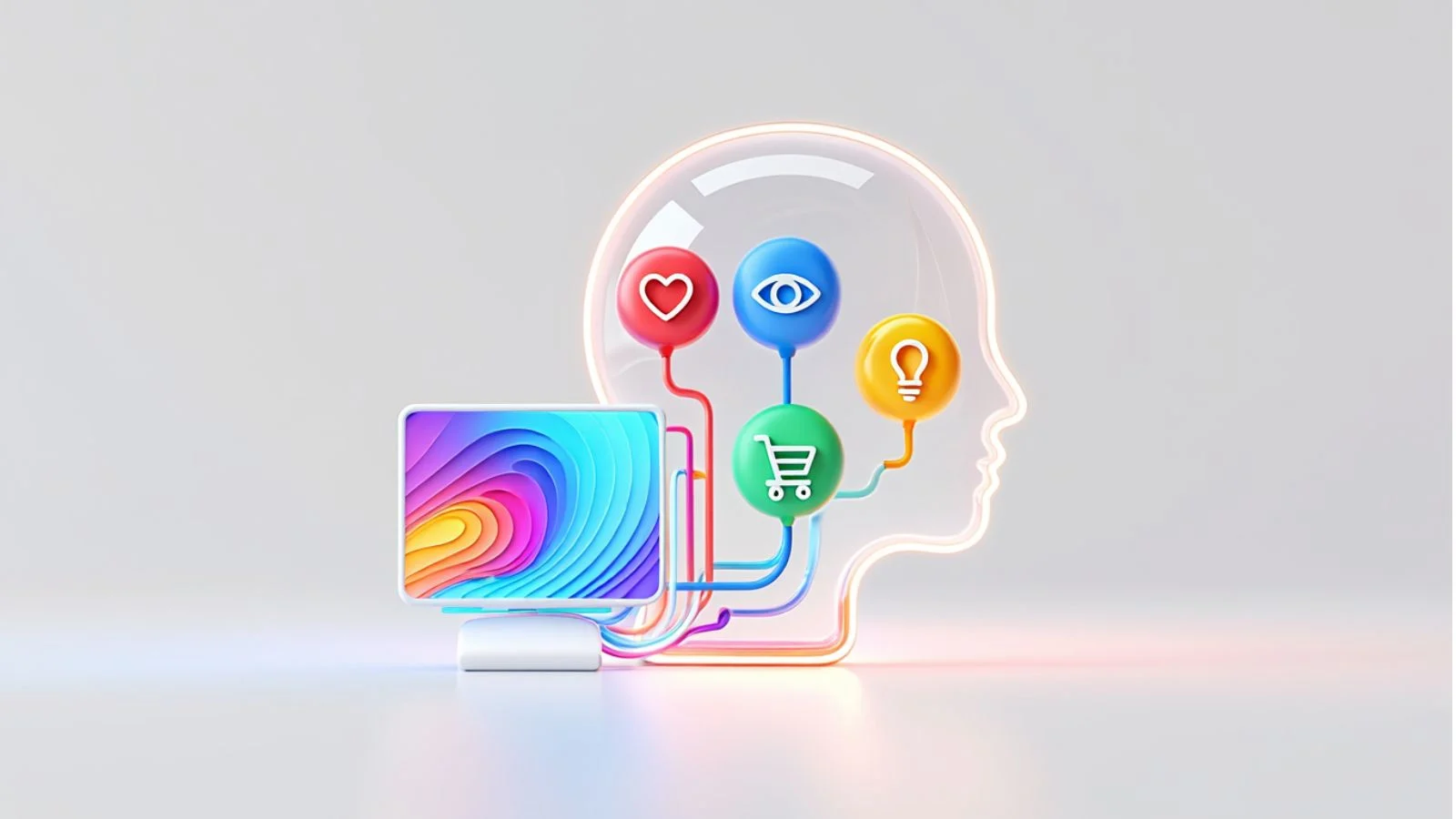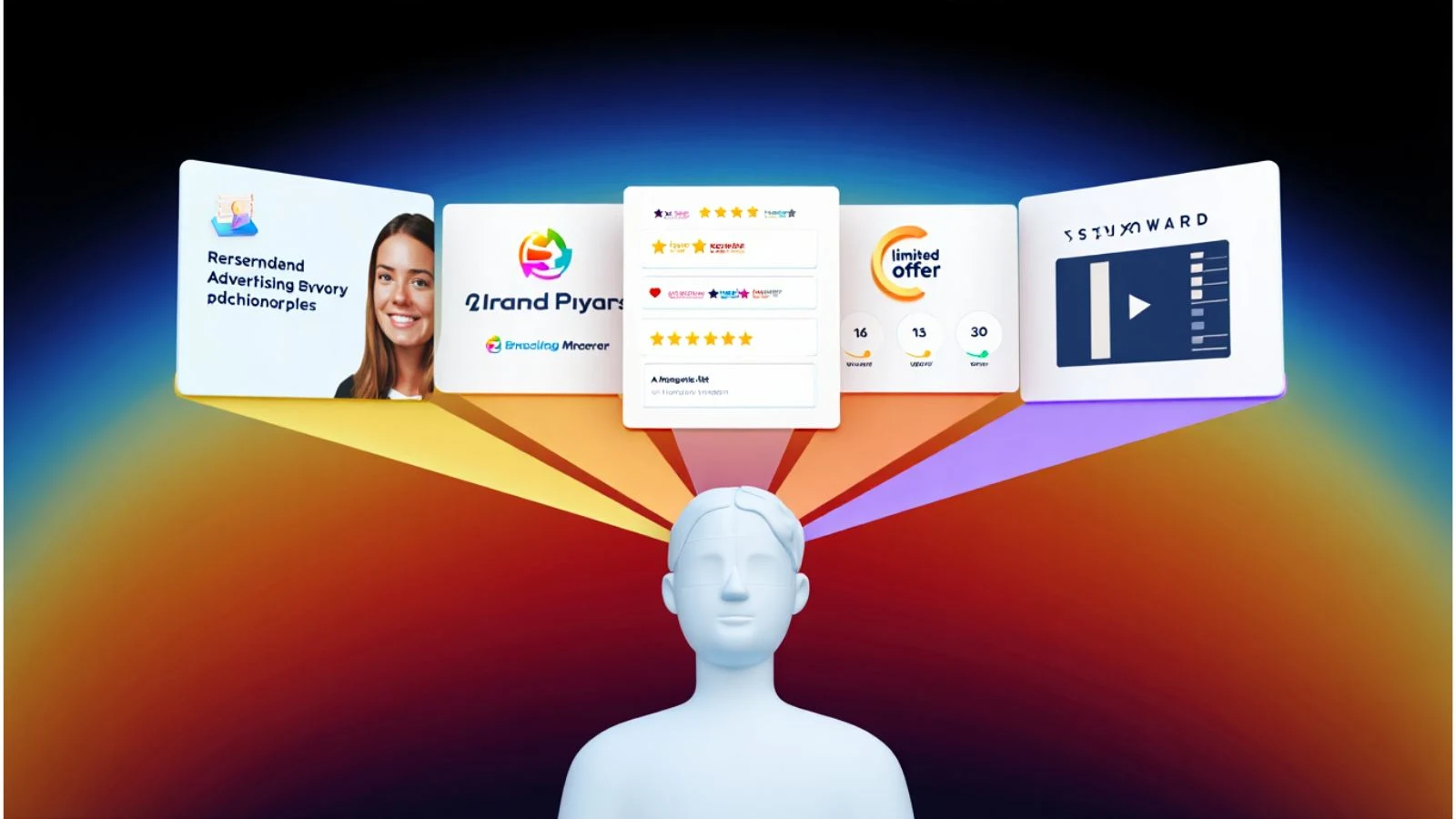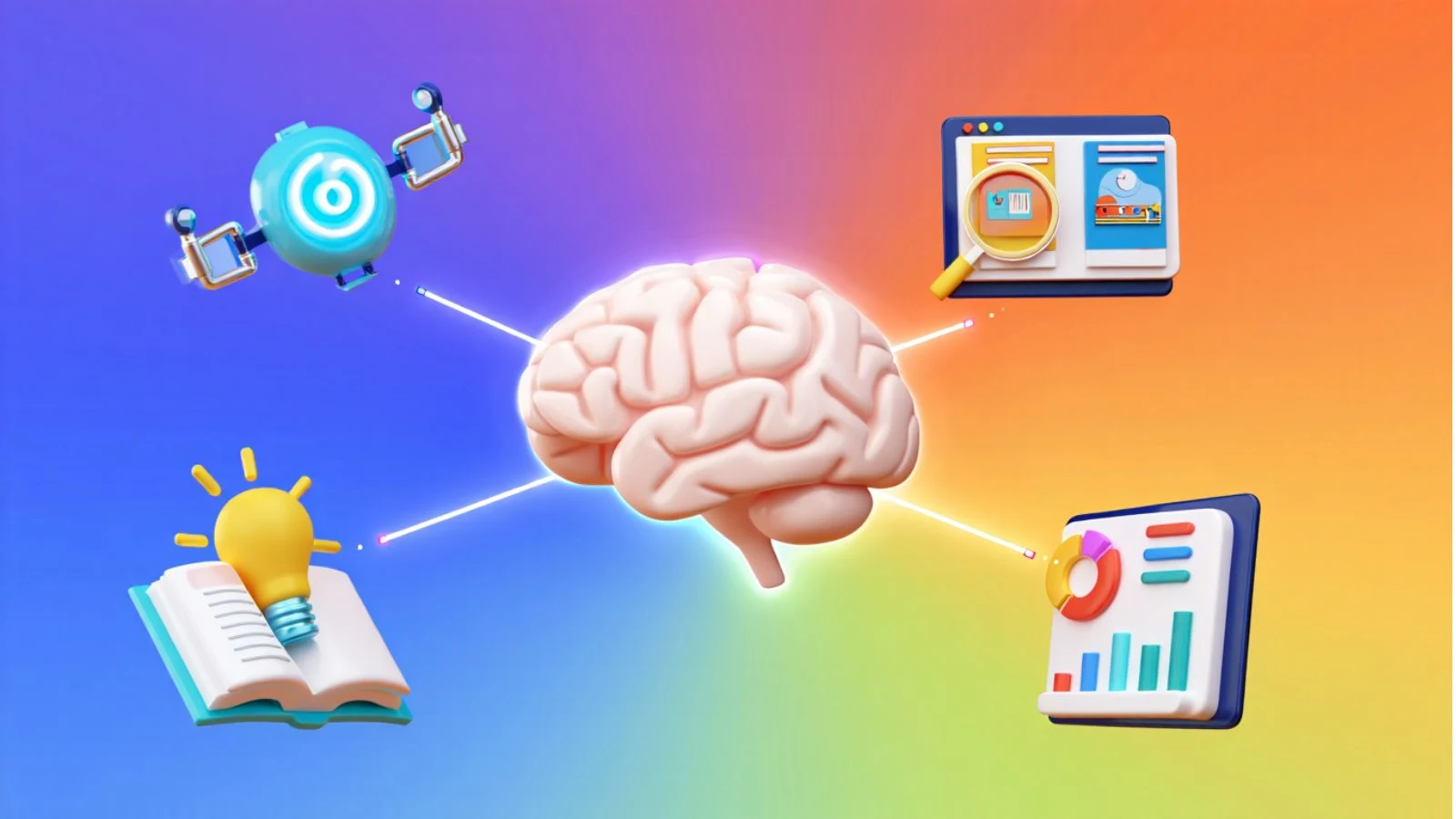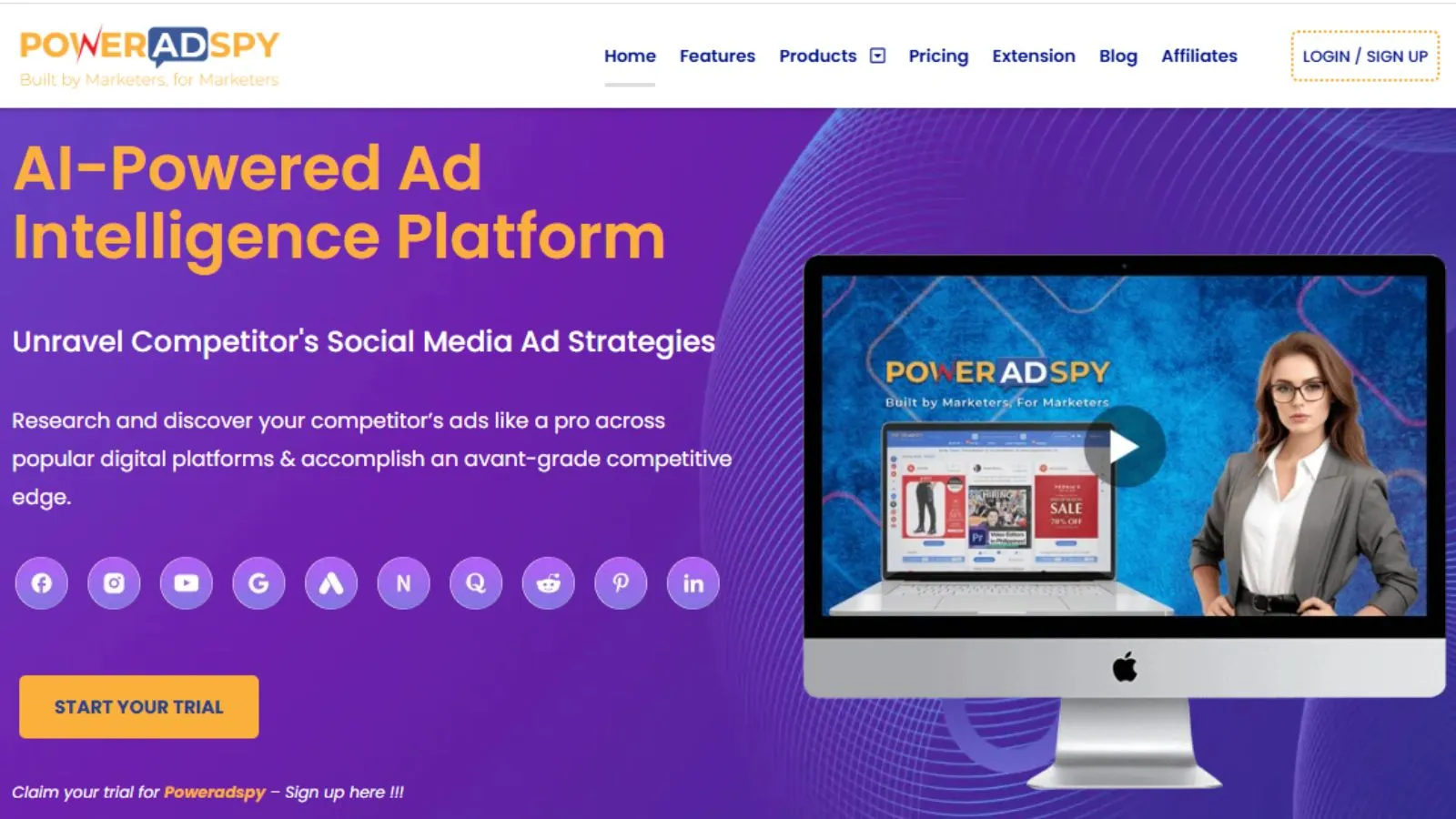Advertising Psychology Explained: How to Create Impactful Ads?
When starting an ad campaign, what do you think about the most? Don’t you want more exposure for your ads so that more people can view them? However, advertising is more than just showing a product or service to potential customers. Behind every successful ad, there is a lot of research to understand the interests of the target audience. Here, advertising psychology plays an important role in letting you know about consumer behaviour and crafts ads that are meaningful, persuasive, and highly converting.
By applying psychological principles, marketers can create ads that capture attention, evoke emotion, and drive action.
Understanding how consumers think and feel allows brands to craft messages that resonate on a deeper level. From colour choices to messaging tone, every element of an ad can influence a person’s decision to engage or purchase. In today’s competitive digital landscape, knowing advertising psychology isn’t just helpful it’s essential.
In this guide, we’ll explore the key principles of advertising psychology, share real-world examples, and show how businesses can use these insights to create more impactful and successful ads.
You can Listen to this blog here.
What Is Advertising Psychology?
Advertising psychology is the study of how human thoughts, emotions, and behaviours influence the way people respond to advertisements. It goes beyond simply promoting a product—it focuses on understanding the mental triggers that drive decisions and actions.
Unlike general marketing, which may focus on broad strategies like brand awareness or reach, advertising psychology dives into the why behind consumer choices. It examines how factors like perception, memory, emotions, and social influence affect engagement with ads.
For example, certain colours can evoke emotions like trust, excitement, or urgency. Similarly, words, visuals, and storytelling advertising techniques can create powerful subconscious reactions. Understanding these factors allows marketers to design ads that not only attract attention but also motivate people to take action.
In essence, advertisement psychology turns advertising from a simple message into a strategic tool that resonates with human behaviour, making campaigns more effective and impactful.
Key Principles of Advertising Psychology
Understanding the core principles of advertising psychology helps marketers design ads that effectively influence consumer behaviour. Here are some of the most important concepts:
1. Emotional Triggers
Emotions drive decisions more than logic. Ads that evoke feelings like happiness, fear, curiosity, or nostalgia tend to be more memorable and persuasive. For example, a heart warming story in a commercial can create a strong emotional connection with a brand.
2. Colour Psychology and Design Impact
Colours influence perception and mood. Red can evoke urgency or excitement, blue can build trust, and yellow can grab attention. Thoughtful use of colours in ads can subconsciously affect how viewers respond.
3. Social Proof and Authority
People tend to follow the actions of others. Including testimonials, reviews, or endorsements from experts can boost credibility and trust. Social proof is a powerful tool in ad psychology for convincing potential customers.
4. Scarcity and Urgency
Limited-time offers or low-stock alerts create a sense of urgency, prompting quicker decisions. The fear of missing out (FOMO) is a psychological trigger widely used in advertising.
5. Storytelling and Narrative Techniques
Stories are memorable and engaging. Ads that tell a story can connect with consumers on a deeper level, making the message more relatable and persuasive.
By applying these principles, marketers can create ads that not only attract attention but also influence behaviour, making campaigns more successful and impactful.
Psychology of Advertising Examples
Seeing advertising psychology in action helps understand how theory translates into real-world results. Many brands use psychological principles to create campaigns that capture attention, engage audiences, and drive sales.
1. Emotional Triggers in Ads
Coca-Cola’s “Share a Coke” campaign replaced its logo with popular names. This created a personal, emotional connection, encouraging consumers to purchase a bottle with their name or the name of a friend. The result? A significant boost in engagement and sales.
2. Color Psychology
McDonald’s uses red and yellow in its branding and ads. Red evokes excitement and urgency, while yellow grabs attention and conveys happiness. Together, these colours subconsciously encourage customers to enter the restaurant and make purchases.
3. Social Proof
Amazon often highlights product ratings, reviews, and “best-seller” tags. This psychological tactic leverages social proof, influencing buyers by showing what others prefer or trust.
4. Scarcity and Urgency
Limited-time deals on e-commerce platforms like Flipkart or Amazon create urgency. Consumers feel a fear of missing out, prompting them to act quickly—often resulting in faster conversions.
5. Storytelling
Nike’s campaigns often tell inspiring stories of athletes overcoming challenges. These narratives engage emotions, making viewers more likely to connect with the brand and take action.
These psychology of marketing examples show how understanding human behaviour can dramatically increase the effectiveness of campaigns. By using emotional triggers, colours, social proof, urgency, and storytelling, businesses can craft ads that leave a lasting impact.
How Ad Psychology Impacts Consumer Behaviour?
Ad psychology plays a significant role in shaping how consumers think, feel, and act. By understanding human behavior, marketers can design campaigns that influence decisions and drive engagement.
1. Subconscious Influence
Many decisions are made subconsciously. Ads that use colour psychology, emotional triggers, or familiar patterns can guide consumers’ choices without them even realizing it. For instance, seeing a trusted brand repeatedly builds familiarity and trust, increasing the likelihood of purchase.
2. Enhanced Targeting and Messaging
Understanding the audience’s psychological triggers allows marketers to craft messages that resonate. Personalized ads that address specific desires or pain points can dramatically improve engagement and conversions.
3. Emotional Connection
Ads that connect emotionally with consumers tend to be more memorable. Whether it’s joy, nostalgia, or empathy, emotional resonance encourages stronger brand loyalty and repeat engagement.
4. Driving Action
Psychological tactics like scarcity, urgency, and social proof create a sense of immediacy, prompting consumers to take action—whether making a purchase, signing up, or sharing the ad with others.
By applying advertising psychology, businesses can influence consumer behaviour more effectively. Understanding how humans respond to different stimuli helps marketers craft campaigns that not only attract attention but also convert audiences into loyal customers.
Tools and Techniques to Apply Advertisement Psychology
Applying advertising psychology effectively requires both strategy and the right tools. Marketers can leverage various methods to understand their audience and create more impactful campaigns.
1. Audience Analysis
Tools like surveys, focus groups, and behavioural analytics help marketers understand customer preferences, motivations, and pain points. Knowing your audience’s mindset is essential for crafting messages that resonate.
2. A/B Testing
A/B testing allows marketers to test different versions of ads to see which performs better. By experimenting with headlines, visuals, colours, and messaging, businesses can identify which psychological triggers drive the most engagement.
3. Data Analytics
Platforms that track clicks, conversions, and engagement rates provide insights into how consumers respond to ads. Analytics help marketers refine campaigns and make decisions based on real behaviour, not just assumptions.
4. AI-Powered Tools
Artificial intelligence can analyze vast amounts of data to predict which messages will resonate with different segments. These tools can optimize ad targeting, timing, and content based on psychological insights, making campaigns more efficient.
5. Creative Techniques
Incorporating storytelling, emotional appeals, and design principles into ads ensures that campaigns connect with consumers. Techniques like using social proof, scarcity, and urgency can further enhance ad effectiveness.
By combining these tools and techniques, marketers can apply advertising psychology in a structured and measurable way, creating campaigns that truly influence consumer behaviour and drive results.
How PowerAdSpy Helps Businesses Leverage Ad Psychology?
Understanding advertising psychology is one thing, but applying it effectively requires the right tools. PowerAdSpy is designed to help marketers analyze, learn from, and implement psychological strategies in their campaigns.
Key Features of PowerAdSpy:
- Competitor Ad Analysis
PowerAdSpy allows businesses to spy on competitors’ ads across multiple platforms. By studying which ads perform well, marketers can identify the psychological tactics employed, such as emotional triggers, colours, or the use of urgency. - Audience Insights
This tool provides detailed audience engagement metrics, helping marketers understand which ad styles and messages resonate most with different demographics. - Trend Identification
By tracking successful ads, PowerAdSpy helps businesses spot emerging trends in ad psychology. This allows marketers to stay ahead and create campaigns that are both current and impactful. - Optimized Campaign Strategy
By leveraging insights from competitor ads and audience behaviour, marketers can refine their own campaigns, applying the principles of ad psychology to enhance engagement and conversions.
By using PowerAdSpy, businesses can turn advertising psychology into actionable strategies. It makes understanding consumer behaviour easier and helps create ads that are more persuasive, engaging, and successful.
Challenges and Misconceptions About Ad Psychology
While advertising psychology can significantly boost campaign effectiveness, there are challenges and misconceptions that marketers need to be aware of.
1. Over-Reliance on Psychological Tricks
Some marketers may focus solely on psychological tactics, forgetting the importance of product quality and brand value. Ads can capture attention, but long-term success depends on delivering real value to consumers.
2. Ethical Considerations
Using psychology to influence consumer behaviour comes with ethical responsibilities. Manipulating emotions or creating false urgency can harm trust and damage a brand’s reputation. Responsible application of advertisement psychology ensures campaigns remain ethical and effective.
3. One-Size-Fits-All Doesn’t Work
Not every psychological trigger works for every audience. Cultural differences, demographics, and personal preferences can affect how consumers respond. Testing and adaptation are crucial to ensure ads resonate with the intended audience.
4. Data Dependence
Understanding and applying ad psychology effectively relies on accurate data. Poor data or misinterpreted insights can lead to ineffective campaigns. Combining psychological principles with solid analytics is essential.
By recognizing these challenges, marketers can apply ad psychology strategically, ensuring campaigns are both ethical and impactful, rather than relying on shortcuts or assumptions.
Future of Advertising Psychology
The future of advertising psychology is exciting, with new technologies and insights shaping how marketers connect with consumers.
1. AI and Predictive Analytics
Artificial intelligence will play a larger role in predicting consumer behaviour. By analyzing patterns, AI can suggest which psychological triggers—like emotional appeals or urgency are most likely to resonate with specific audiences.
2. Hyper-Personalization
Ads will become increasingly personalized. Instead of generic campaigns, brands will deliver content tailored to individual preferences, using psychological insights to make messaging more relevant and impactful.
3. Immersive Experiences
Virtual and augmented reality will allow marketers to create immersive ad experiences. Engaging multiple senses will strengthen emotional connections, making ads more memorable and persuasive.
4. Ethical Psychology in Advertising
As awareness grows, ethical use of psychological tactics will become a priority. Consumers will favor brands that influence behaviour responsibly, balancing persuasion with honesty and transparency.
By embracing these trends, businesses can stay ahead of the curve. Applying advertising psychology with modern tools and technologies will enable more effective, engaging, and ethical campaigns in the years to come.
Common Psychological Tactics Used in Ads
Marketers often use specific psychological tactics to make ads more persuasive. Understanding these can help businesses craft campaigns that resonate effectively.
1. Reciprocity
People tend to return favours. Free trials, samples, or valuable content can make consumers more likely to engage or purchase in return.
2. Anchoring
Presenting a higher-priced product first makes subsequent offers seem more reasonable. This influences perception and encourages decision-making in favour of the brand.
3. Loss Aversion
Consumers are more motivated by the fear of losing out than by potential gains. Highlighting what they might miss—limited offers or exclusive deals drives quicker action.
4. Social Proof
Showcasing reviews, testimonials, or endorsements from influencers creates trust and encourages engagement. People are more likely to follow the actions of others.
5. Commitment and Consistency
Once consumers take a small action (like signing up for a newsletter), they are more likely to continue engaging with the brand. This principle builds long-term loyalty.
By strategically applying these tactics, businesses can make their advertising more persuasive while staying ethical and consumer-focused.
Conclusion
Advertising psychology is a powerful tool that helps marketers create ads that truly connect with consumers. By understanding emotions, subconscious triggers, and behavior patterns, businesses can design campaigns that capture attention, engage audiences, and drive conversions.
Real-world examples show how colors, storytelling, social proof, and urgency influence decisions. Applying these principles thoughtfully ensures that ads are not only persuasive but also ethical and impactful.
Tools like PowerAdSpy make it easier to implement advertising psychology by analyzing competitor campaigns, tracking trends, and providing insights into audience behavior. By combining psychological principles with modern analytics, marketers can create smarter, more effective campaigns.
In today’s competitive landscape, mastering advertising psychology is not just an advantage—it’s essential for creating ads that leave a lasting impression and drive meaningful results.
FAQs
- What is advertising psychology in simple terms?
Advertising psychology is the study of how human thoughts, emotions, and behaviors influence responses to ads. It helps marketers create messages that connect with consumers effectively. - How can ad psychology increase conversions?
By understanding psychological triggers like emotions, social proof, and urgency, marketers can design ads that capture attention, encourage engagement, and drive purchases. - Are there ethical concerns in using psychology in advertising?
Yes, ethical considerations are important. Manipulating emotions or creating false urgency can harm trust. Ads should influence behavior responsibly while remaining honest and transparent. - How does PowerAdSpy help with understanding ad psychology?
PowerAdSpy allows marketers to analyze competitor campaigns, track trends, and gain insights into audience behavior. This helps apply psychological principles more effectively in ads.






